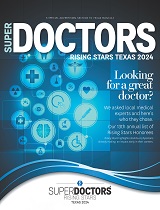The National Institutes of Health
From NIH Research Matters (NIH)
July 12, 2012
Treatment is delivered faster when emergency medical services (EMS) personnel notify hospitals a possible stroke patient is en route, yet pre-notification doesn't occur nearly one-third of the time. That's according to two separate Get With The Guidelines®- Stroke program studies published in American Heart Association journals.
The American Heart Association/American Stroke Association recommends EMS notify hospitals of incoming stroke patients to allow stroke teams to prepare for prompt evaluation and treatment. Quick response is vital for stroke patients, particularly those with ischemic stroke, when a clot cuts off the blood supply to a portion of the brain. Clot-busting drugs can only be given within a limited time - three to 4.5 hours after the onset of symptoms.
For both studies, researchers examined the records of 371,988 acute ischemic stroke patients transported by EMS to one of 1,585 hospitals participating in the Get with The Guidelines-Stroke quality improvement program between 2003 and 2011.
Pre-notification of hospital by EMS resulted in faster diagnosis and treatment for stroke patients, according to the study published in Circulation: Cardiovascular Quality & Outcomes.
Pre-notification was independently associated with better treatment times:
- arrival-to-imaging times of 25 minutes or less,
- arrival-to-treatment with the clot-busting drug tPA within 60 minutes,
- symptom onset-to-tPA treatment times of 120 minutes or less,
- and more eligible patients treated with tPA.
However, pre-notification occurred in only 67 percent of patients in 2011, only a modest increase from the 58 percent in 2003, according to the study published in the Journal of the American Heart Association (JAHA).
"Despite national guidelines recommending pre-notification by EMS for acute stroke patients, it's disappointing that there's been little improvement," said Gregg C. Fonarow, M.D., senior author of both studies and professor of cardiovascular medicine at the University of California-Los Angeles. "However, with these powerful new findings demonstrating substantial benefits with pre-notification, we have a tremendous opportunity to make positive changes in this component of stroke care."
Among patients arriving within two hours of symptom onset, patients with EMS pre-notification were more likely to:
- be treated with tPA within three hours (82.8 percent vs. 79.2 percent);
- have shorter arrival-to-imaging times (26 minutes vs. 31 minutes);
- have shorter arrival-to-tPA treatment times (78 minutes vs. 80 minutes); and
- have shorter symptom onset-to-tPA treatment times (141 minutes vs. 145 minutes).
The researchers found dramatic variations in pre-notification rates:
- Rates ranged from 0 percent to 100 percent among individual hospitals.
- Rates were higher in non-academic hospitals and those that more frequently use tPA.
- States and regions also varied widely, from 93.4 percent in Montana to 19.7 percent in the District of Columbia.
- Rates were lower in the northeast.
"The large variations by state and hospital are really striking and should be a concern because the potential for ideal patient care isn't being met," Fonarow said. "We've developed a map of rates by state. This tool can identify areas that are most in need of improved stroke care systems."
Furthermore, EMS pre-notification was significantly less likely if patients were older, black or had a prior history of stroke, diabetes or peripheral vascular disease (clogged leg arteries).
"This tells us what we need to target EMS education," Fonarow said. "These patients are at higher risk for stroke and other ailments and may present challenges to EMS determining in the field whether their symptoms represent stroke. The goal is that EMS provides advanced notification for every potential stroke patient being transported."
The studies included only data from Get With The Guidelines-Stroke hospitals. However, these comprise about one-third of U.S. hospitals and are considered representative of all hospitals in terms of pre-hospital care, Fonarow said.
Co-authors of both studies are Cheryl Lin, B.S.; Eric D. Peterson, M.D., M.P.H.; Eric E. Smith, M.D., M.P.H.; Jeffrey L. Saver, M.D.; Li Liang, Ph.D.; Ying Xian, M.D., Ph.D.; DaiWai M. Olson, Ph.D., R.N.; Bimal R. Shah, M.D., M.B.A.; Adrian F. Hernandez, M.D., M.H.S.; and Lee Schwamm, M.D. Author disclosures are on the manuscript.
The Get With The Guidelines-Stroke program is supported in part by a charitable contribution from Janssen Pharmaceutical Companies of Johnson & Johnson. The program has been funded by Boeringher-Ingelheim, Merck, Bristol-Myers Squib/Sanofi Pharmaceutical Partnership and the American Heart Association Pharmaceutical Roundtable.
Call 9-1-1 if you or someone you're with experiences stroke warning signs. Use this map to find an American Heart Association/American Stroke Association--certified stroke center near you.
For more information on Get With The Guidelines-Stroke and other American Heart Association quality programs, visit www.heart.org/quality.

